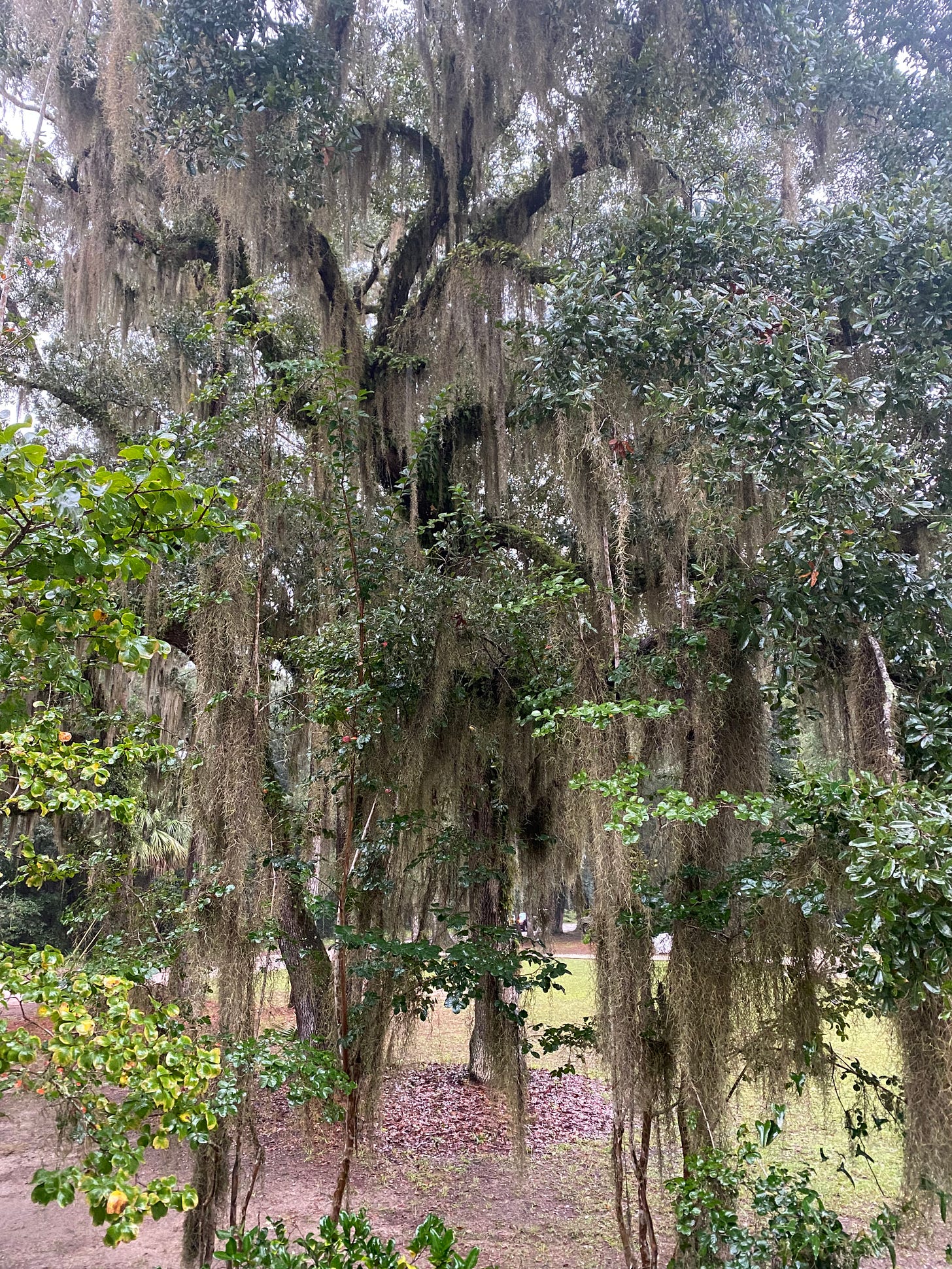Since Monday is Indigenous People’s Day, it felt appropriate to pay intentional attention to the first people of Daufuskie Island, where I just spent a long weekend beneath centuries-old oak trees draped in moss. Do you know the name of the native tribe who first lived on the land where you grew up, where you live now, or where you enjoy visiting? Give it a Google!
The Cusabo were the first people of Daufuskie Island. This amalgamation of tribes along the Carolina coast and sea islands included the Ashepoo, Combahee, Cusso, Edisto, Escamacu, Etiwaw, Kiawah, Stono, Bohicket, Wando, Wappoo and Wimbee. The Yemasee tribe, who later became allies of the Spanish and engaged in slave trade, came up from Florida and pushed many of the indigenous tribes out of the area. Pottery and arrowheads of both groups have been found on the island, some still preserved in a dusty glass case in the tiny school house museum.
By the mid-1500s, the Spanish had traveled up from St. Augustine and colonized the South Carolina coast alongside the Yemasee. About 100 years later, the English began to settle the sea islands and eastern coastline, which the Spanish didn’t like. So, like real a-holes, they stoked tensions between the Yemasee and the British/Scottish colonizers.
Settlement raids were commonplace at the end of the 1600s through the beginning of the 1700s. A turning point in the balance of power occurred in August of 1715, when Yemasee war canoes approached the southern end of the island to attack a British settlement. Prepared for the conflict with more powerful, the colonizers fired on the approaching warriors, turning the surrounding water red with blood. A raid became a massacre, and this part of the island is still called Bloody Point. It would only take two more years before Yemasee presence on the island was all but stamped out.
At the same time, King George is handing out land on Daufuskie like it belonged to him or something. These landowners became plantation owners, and enslaved West African people were brought to the island to farm cotton. Because the Africans were resistant to the malaria and yellow fever that sent the slave-owners north for half of the year, the West African culture and traditions flourished and proliferated in the area. The descendants of these enslaved people are known as the Gullah and Geechee—Gullah is a family has roots in South Carolina, Geechee if in Georgia.
During the Civil War, plantation owners and enslaved people were sent to the mainland and Union soldiers held the island. After the war and the emancipation proclamation, many freed Gullah people returned to Daufuskie and bought land, re-creating this isolated bastion of African culture as free people.
Because the island has never had a bridge, didn’t get electricity ’til 1953, and didn’t get telephone poles ‘til 1972, the Gullah culture was preserved. While it is crucial to pay homage to the indigenous people of Daufuskie, it’s important to also pay attention to the island as a Black cultural haven in the south.
There’s a common myth that the word “Daufuskie” is the Gullah pronunciation of “the first key,” but it’s actually a native Muscogee word referencing the shape of the island that means “sharp feather.”
If you want to read more about Daufuskie’s history up to the present day, including ghosts, famous authors, and John “Cougar” Mellencamp, here you go.
I hope you make the trip sometime.
Until next week,
Elizabeth
This newsletter is just one facet of Zhuzh, my platform dedicated to conscious consumption and making space for delight. I offer secondhand-and-vintage-based wardrobe and interior styling services, art curation, and super chill life coaching. Keep up with me on Instagram and learn more at www.zhuzhlife.com.








